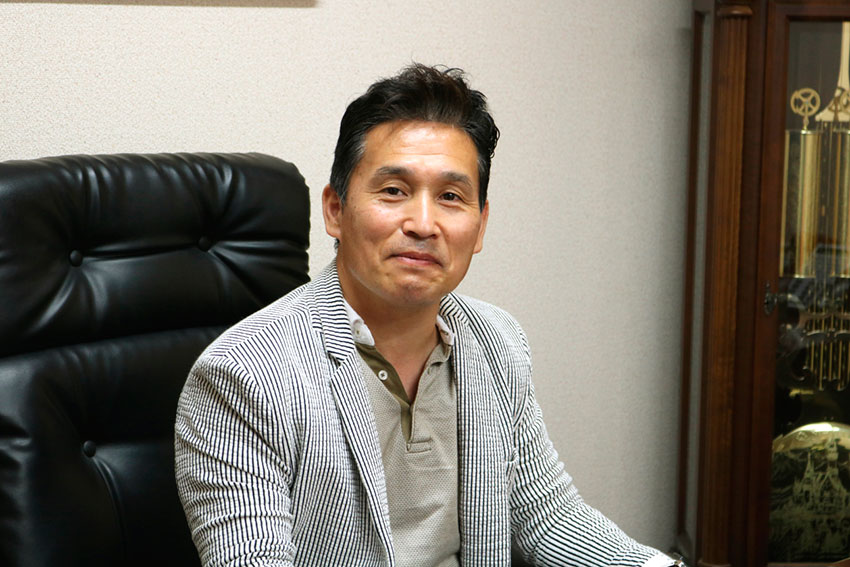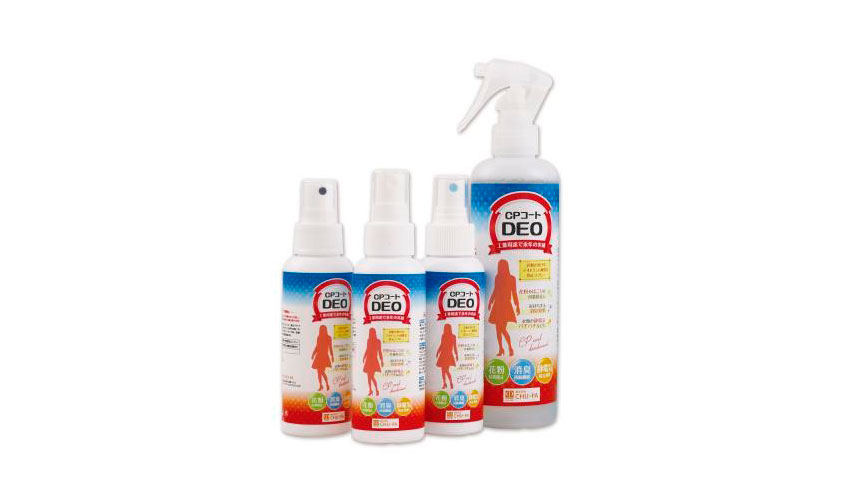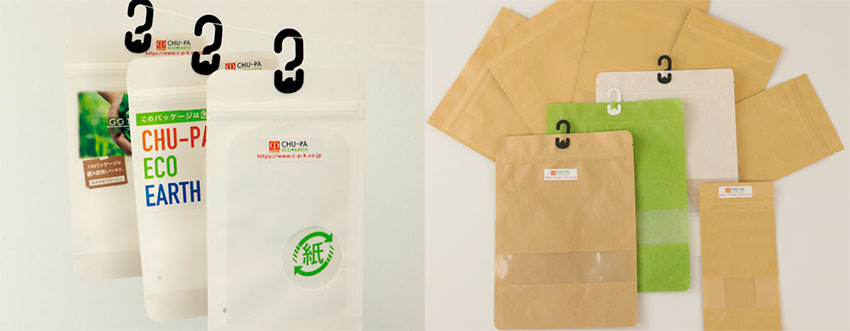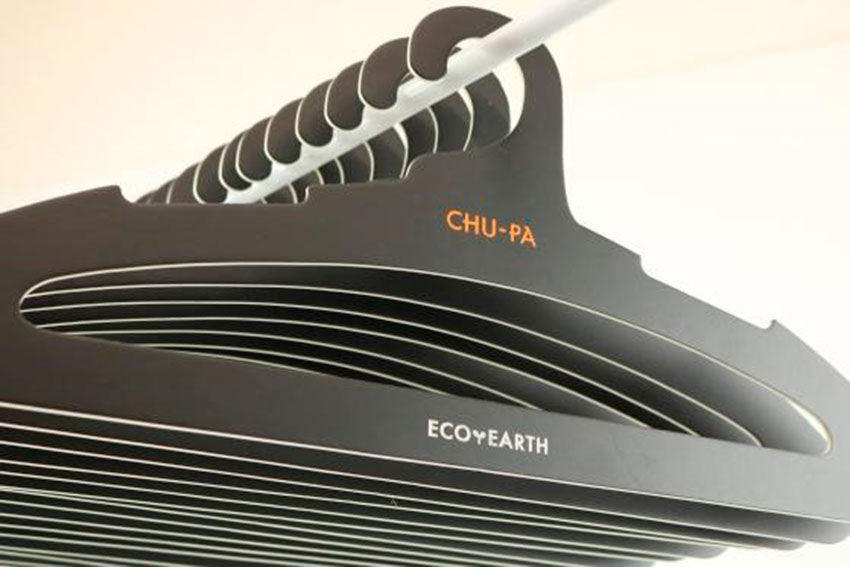Since their foundation in 1961, Chuo Packaging, Inc. continues to be trusted supplier of flexible packaging and apparel material. We spoke with Mr. Atsuki Sugano, president of Chuo Packaging, Inc. about their longstanding relationship as a supplier to Japan’s fashion and apparel industry, and about their latest scheme to create packaging solutions out of alternative materials.

Why is Japanese manufacturing so well sought after? What are the qualities of Japanese monozukuri that allow it to succeed?
The equipment that is used in many industries such as the packaging industry, is more or less the same, no matter where you live in Japan. What is different however, is the people that operate this equipment. It is they who adjust the equipment to be used to develop high-quality products. The techniques that are used in handling the equipment, and the human knowledge and expertise that has been accumulated by the engineers are key to Japanese monozukuri.
During the Covid-19 pandemic, packaging companies were severely affected. However, opportunities arose during this period. While in-store sales and high street sales diminished rapidly, vending machine sales increased, and e-commerce transactions increased ten-fold in the United States. What was the impact of Covid-19 on your company, and what long-term adjustments have you made to your product line-up as a result?
We have overseas facilities in Asian region, however during the pandemic, it was difficult for Japanese staff to travel to certain overseas destinations. This caused some miscommunication. While online zoom meetings could be held, many of the nuances and details could not be as well addressed. That was a bad side to the pandemic.
In relation to e-commerce, did you notice changes in your business with the switch from high street to e-commerce-based sales?
Yes, we have definitely seen more traction given to e-commerce. For example, one online retail shop in Japan is called Rakuten. We are now launching our Anti-static agent branded "CP Coat" on this platform, starting this July.

There are three major effects to consider when talking about the features of our "CP Coat DEO" which has developed as a derivative of the original CP Coat. First, is their reliable anti-static effect. Second, is their long-lasting deodorant effect, and third, they have an anti-pollen function. All of these three major features are embedded into our "CP Coat DEO".
Could you tell us more about how your company is adapting its business model to Japan’s population change? What opportunities and what challenges is it presenting you with?
The apparel industry is the core industry for our company. We supply a lot of materials to companies in that industry. Currently we are seeing a greater shift in the location of production sites right now, rather than a change in our operations due to the shift to an aging society. We are seeing many companies that localized their production in China and South Korea, now shifting to cheaper locations, such as Bangladesh. Various apparel manufacturers are choosing the cheaper labor force in Bangladesh. Therefore, we are following this trend.
With regards to Thailand, the fishing industry is one of the largest industries there. We are making the packaging for locally manufactured cat food in Thailand. Because most cat food is wet, it needs to contain an amount of water, so the packaging needs to be more airtight in comparison to dry food for dogs. The packaging for cat food must prevent impurities from entering, and therefore must be firm. We are currently introducing better packaging solutions for cat food.
What is the technology that you are using to provide that ideal packaging for cat food?
The benefit that we bring is that at our production site is that we are capable of combining many different types of materials and different kinds of film for the packaging of this cat food. We use materials such as nylon, polypropylene, polyethylene and PET. We combine these materials to make better packaging. Our company is capable of introducing many different kinds of materials, best suited for the packaging of each product, and this allows us to offer many packaging solutions to our customers.

What are those alternative materials that you are looking to develop, especially as environmental concerns become a bigger issue? Carbon neutrality is a big goal of the Kishida government. How are you helping companies to go carbon neutral?
Our paper hangers are ideal for light clothing that does not weigh so much, such as t-shirts and underwear. Biomass plastic is now very popular due to the contamination of the earth and the fact that many types of plastic are not particularly eco-friendly. We are introducing packaging which combines paper and film. Paper makes up over 50% of this packaging and it is possible to display the word "paper" as a recycling mark.

Materials such as cellulose and nano-fiber are being developed by many companies. Are you looking to push it further with such alternative materials?
It is possible, but it will depend on the cost. We are open to different kinds of biomass, but it can be difficult to propose due to the cost.
Fast fashion has become a huge trend valued at USD 91 billion. However, it leads to huge waste as more than 10,000 items go into landfills every five minutes from fast fashion. How can it be more this sustainable?
Legislation in Japan is becoming stiffer in regard to industrial plastic waste. Since April 1st of this year, the law is designed to promote 3R+Renewable in the entire process of plastic product design, sales and waste disposal, and to promote the transition to a circular economy. Our company is using this as a business opportunity, and we are currently in talks with a domestic company that deals with apparel fashion. We take plastic waste such as old films and bottle caps, and reprocess it to make products such as hangers, which can then be used for hanging clothes in the apparel industry.
When we talk to our end users, first of all, the number one point we discuss is the need to decrease the burden on the environment by eliminating plastic waste. Also cost wise, there is a slight increase when comparing conventional plastic hangers with paper-based hangers. However, we believe that prices will gradually stabilize as more customers use products made from environmentally friendly materials.
What is your mid-term strategy, and what are you looking to achieve?
The number one problem in Japan is low birthrate and aging population, as you mentioned earlier. Japanese society is changing. That being said, there always will be a domestic market for our products. However, as part of our mid-term strategy plan, we are looking to overseas markets as the domestic market shrinks. Sales expectations in foreign markets are increasing. Many Japanese companies in the apparel industry are also expanding overseas. That has been a big indicator for our company, and we want to continue to expand overseas.
The contribution to the environment is also a big issue now, and plastic waste management and recycling is an important area for us. We are looking to become even more eco-friendly by dealing with recycling, and introducing more environmentally friendly solutions to our customers.
Are you looking for partners in your overseas business that will help you to develop environmentally friendly technology and provide new services in new markets?
Yes, that is true. Inevitably we will need to collaborate with local key players, because it is very difficult to start from scratch in foreign markets. Prospective partners will have to be reliable and have a deep understanding of the market, which will allow us to increase our sales and introduce better sales channels in the future.
We see that in 2017 you established three overseas bases in Shanghai, in Thailand and of course in Bangladesh. What are the advantages of those locations for your business, and what new markets have you been able to penetrate with those locations?
We are definitely seeing a lot of synergy in our operations in these countries. Most of our apparel related business partners have localized production in these areas, so having the nearby availability of our packaging is very effective. It also allows us to have a close relationship with the customers, as we can produce and supply products on time. Geographically these are very good locations as many of our business partners operate in these areas.
Moving forward, do you see any business opportunities in Europe or North America? What services and products do you see yourself potentially offering to those clients?
We are not planning on expanding into those regions, however as I mentioned earlier, we produce the packaging for cat food from Thailand, and the final producer of that cat food exports those products to the United States and Europe. We are looking forward to further operations in Thailand, as Thailand catches a large amount of tuna.
Imagine we came back on the last day of your presidency and interviewed you again. What dreams and goals would you like to have achieved by then?
I want the next generation to be more flexible and better at communication, in order to improve and build on what we have already built. Language has been a barrier for us, and I would like to remove this barrier. This would allow us to further expand on our vision for this company, by targeting more foreign markets. I also hope that we can accelerate our proactive efforts towards the SDGs and become a company (useful to the world) that can offer and provide more environmentally friendly solutions.
0 COMMENTS